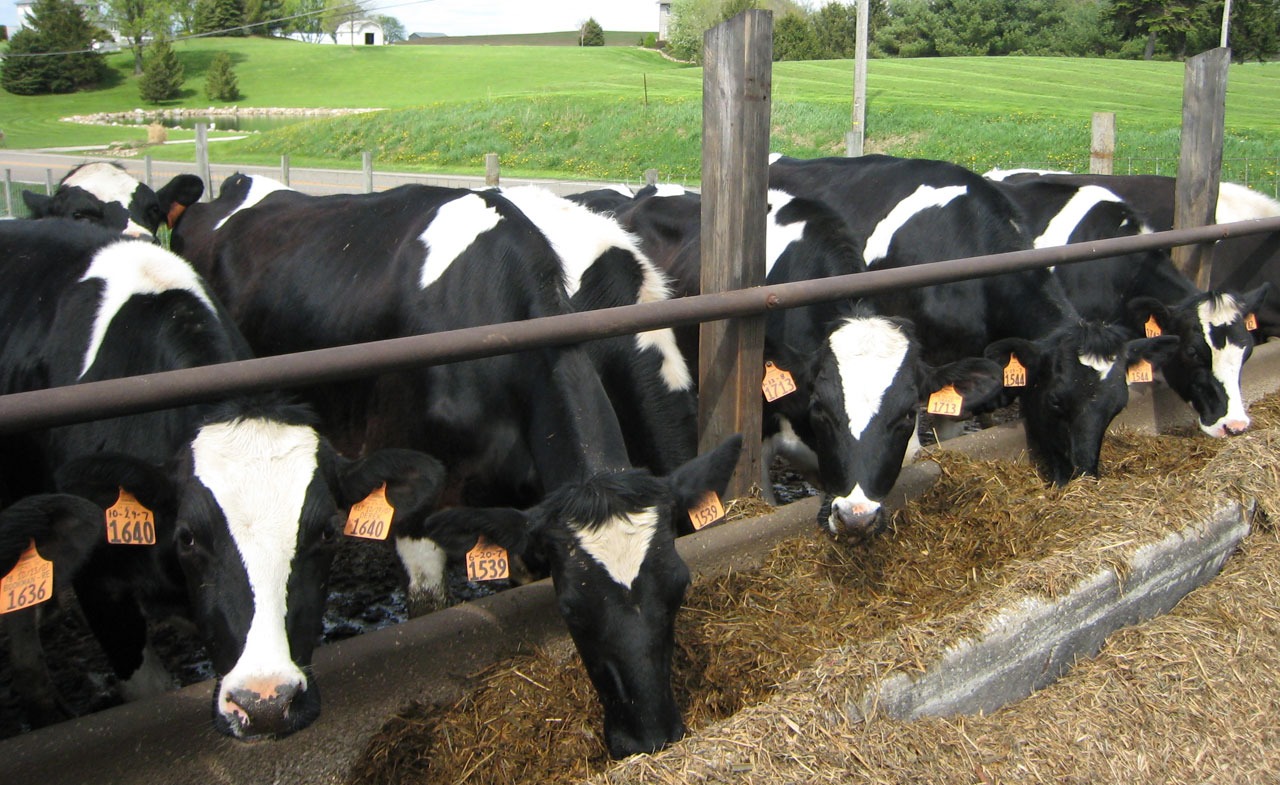
When people think about climate change and its impact on agriculture, it’s usually centered more around what’s coming out of the ground than what’s grazing on it.
“There’s a lot of interest in the impacts of climate change on agriculture. But for the most part, our attention has focused on our major crops,” said Colorado State University Assistant Professor Nathan Mueller. “Usually, when we’re hearing about climate change and livestock, it’s in the context of climate change mitigation. But it’s also critical that we assess the sensitivity of livestock systems to climate variability, so we know the risks facing these systems in a changing climate.”
In a new paper recently published in the U.K. journal Nature Food, Mueller — who researches agricultural sustainability and climate change impacts — set out to study how climate change may have impacted livestock systems, specifically milk yields for dairy cows.
Mueller used monthly milk production data collected nationwide by the USDA from 1981 through 2018 to analyze how yields were influenced by historical variations in the Temperature and Humidity Index (THI).
Cows — they’re a lot like us
Much like humans, the optimal conditions for dairy cows are around the upper 60- to mid-70 degrees with moderate humidity. It’s in the extremes where problems develop.
“We could clearly see the impact of both extreme heat and extreme cold in the historical data,” said lead author Maria Gisbert-Queral, formerly with CSU and now at the Technology Centre of Catalonia in Spain.
That data was especially clear in more frigid climates. During the study, it was found that in extreme heat, dairy yields decreased by approximately 3.7%. But with extreme cold, yields dropped by approximately 6%. Not surprisingly, dairy systems in colder regions were found to be less sensitive to extreme cold temperatures and more sensitive to extreme heat, and vice versa with those in warmer climates.
“This indicates that the systems in different regions of the country are adapted to their climates,” Gisbert-Queral said. “Additionally, when we split up our sample by time periods, we found that the whole system was becoming less sensitive to weather variations of any kind — either heat or cold — over time.”
The impact of ag management
But there were other factors they had to contend with.

“In the real world, farmers use all sorts of management actions to limit the exposure of their systems to stressors of any kind, and that includes weather,” Mueller said. “Housing, sprinklers, shading, fans — all of these things can minimize the impact of weather fluctuations.”
When they dug a little deeper, they found that the net effect of climate trends since 1981 was minimal — about .1% — however the wholesale shift toward less sensitivity had a dramatic positive impact on yields across the country, particularly in northern states, Mueller said. That decrease in sensitivity to both heat and cold is likely due to changes in management practices.
“We can’t point to the specific mechanisms and say that one was more important than the other,” Mueller said. “But it seems likely that management shifts played a large role in driving this change.”
Next steps
CSU researchers plan to work with collaborators from the USDA’s National Health Monitoring System to find out more about what practices made a difference.
“We’re digging into those numbers to try and better understand the specific management changes that occurred over this time period, but also how management varies with climate conditions,” Mueller said.
In the past, dairy farmers were paying the price for weather variability because they were taking hits on their yields, Mueller said. Now the researchers expect that the cost is more on the front end.
“Farmers are managing to avoid the large yield losses from weather they experienced in the past, but it doesn’t mean that these yield increases are free,” he said. “They’re still paying the cost of investing in management practices. But overall, it can be viewed as a positive outcome that the system is much more resilient to climate variability than it used to be.”
Researching similar data internationally, as well as specifically in small-scale operations could also provide an important look into the relative vulnerability of different dairy systems and producers to climate change, Mueller said. Members of the team will also be exploring the intersection between changes in management and animal welfare.
Researchers involved with this study include Maria Gisbert-Queral (CSU, University of Copenhagen, Technology Centre of Catalonia), Arne Henningsen and Bo Markussen (University of Copenhagen), Meredith Niles (University of Vermont), Ermias Kebreab (University of California, Davis) and Angela Rigden (Harvard University).